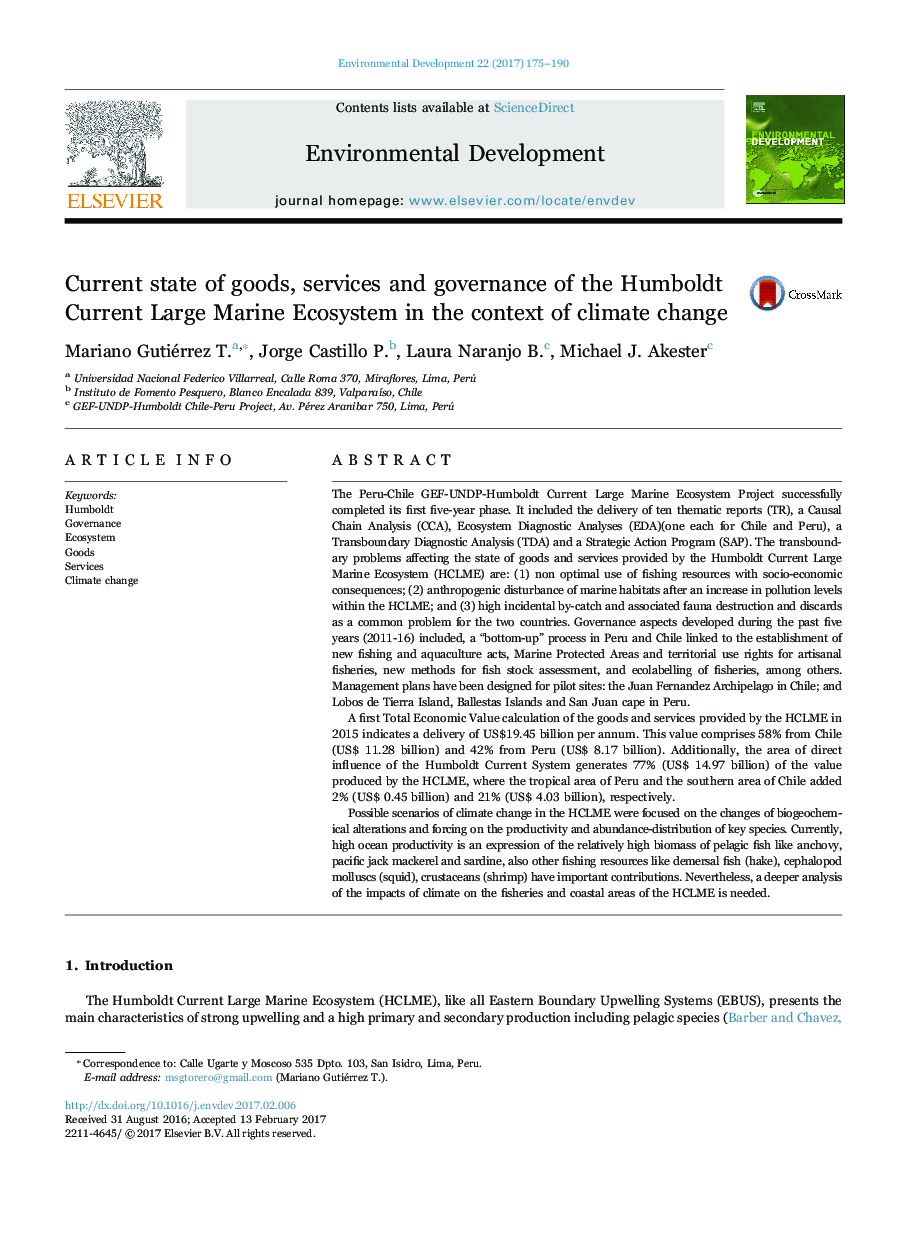| کد مقاله | کد نشریه | سال انتشار | مقاله انگلیسی | نسخه تمام متن |
|---|---|---|---|---|
| 5744139 | 1618079 | 2017 | 16 صفحه PDF | دانلود رایگان |
The Peru-Chile GEF-UNDP-Humboldt Current Large Marine Ecosystem Project successfully completed its first five-year phase. It included the delivery of ten thematic reports (TR), a Causal Chain Analysis (CCA), Ecosystem Diagnostic Analyses (EDA)(one each for Chile and Peru), a Transboundary Diagnostic Analysis (TDA) and a Strategic Action Program (SAP). The transboundary problems affecting the state of goods and services provided by the Humboldt Current Large Marine Ecosystem (HCLME) are: (1) non optimal use of fishing resources with socio-economic consequences; (2) anthropogenic disturbance of marine habitats after an increase in pollution levels within the HCLME; and (3) high incidental by-catch and associated fauna destruction and discards as a common problem for the two countries. Governance aspects developed during the past five years (2011-16) included, a “bottom-up” process in Peru and Chile linked to the establishment of new fishing and aquaculture acts, Marine Protected Areas and territorial use rights for artisanal fisheries, new methods for fish stock assessment, and ecolabelling of fisheries, among others. Management plans have been designed for pilot sites: the Juan Fernandez Archipelago in Chile; and Lobos de Tierra Island, Ballestas Islands and San Juan cape in Peru.A first Total Economic Value calculation of the goods and services provided by the HCLME in 2015 indicates a delivery of US$19.45 billion per annum. This value comprises 58% from Chile (US$ 11.28 billion) and 42% from Peru (US$ 8.17 billion). Additionally, the area of direct influence of the Humboldt Current System generates 77% (US$ 14.97 billion) of the value produced by the HCLME, where the tropical area of Peru and the southern area of Chile added 2% (US$ 0.45 billion) and 21% (US$ 4.03 billion), respectively.Possible scenarios of climate change in the HCLME were focused on the changes of biogeochemical alterations and forcing on the productivity and abundance-distribution of key species. Currently, high ocean productivity is an expression of the relatively high biomass of pelagic fish like anchovy, pacific jack mackerel and sardine, also other fishing resources like demersal fish (hake), cephalopod molluscs (squid), crustaceans (shrimp) have important contributions. Nevertheless, a deeper analysis of the impacts of climate on the fisheries and coastal areas of the HCLME is needed.
Journal: Environmental Development - Volume 22, June 2017, Pages 175-190
